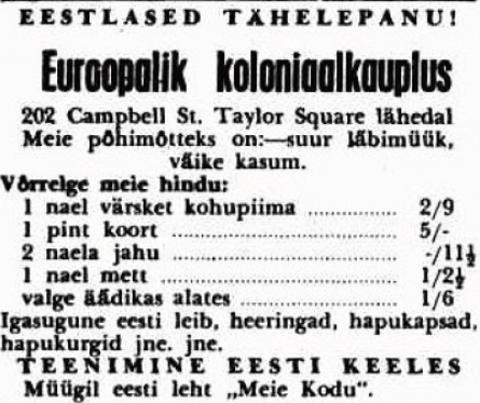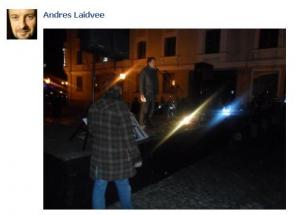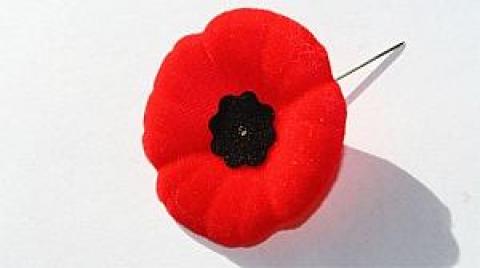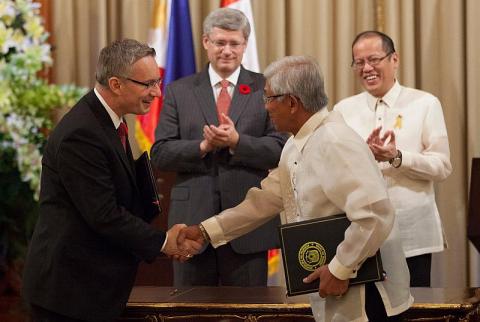________________________________________________________
IV WORLD CONGRESS OF FINNO-UGRIC PEOPLES
Tallinn, Estonia 15-19 August 2004
Congress Office
http://www.suri.ee/kongress
tel. (+372)644 2222
phone/fax (+372)644 9270
e-mail
Andres Heinapuu
General Secretary
phone (+372)56 954 740
e-mail
Valeri Kalabugin
Press Secretary
phone (+372)526 8454
e-mail
________________________________________________________
P R E S S R E L E A S E Tallinn, 23 April 2004
For immediate release
FINNO-UGRIC PEOPLES PREPARING THEIR FOURTH WORLD CONGRESS
Today (23 April), the Consultative Committee of Finno-Ugric Peoples started
its last sitting in Estonia before convocation of the 4th World Congress of
Finno-Ugric Peoples. The oldest language family in Europe, Fenno-Ugrians
will hold this congress in August in Tallinn, Estonia.
The sitting will last three days and will be concluded on 25 April. The
agenda includes drafts for the World Congress of Finno-Ugric Peoples and
programmes of the Congress and its sections. Reports will be presented on
the peoples' present situation. On Friday evening in the town of Obinitsa in
southeastern Estonia, Consultative Committee members will meet with the
Council of Elders of Seto Congress which is the folk representation of
Estonian Seto dialect speakers. On Saturday they will visit the Vyro
Institute, an institution of another southern Estonian language minority.
Its director, ex-minister Kaido Kama, will speak about efforts to revive the
Vyro language and culture.
Yesterday (22 April) members of the Consultative Committee familiarised
themselves with the prospective sites of the congress in the Estonia's
capital city of Tallinn.
Participating in the sitting are representatives of Hungarians, Finns,
Estonians, Udmurts and Maris, Erzya and Moksha peoples (both called also
Mordovians), and other Finno-Ugrians. Representatives of Khanties (Ostyaks)
and Mansis (Voguls) arrived from Siberia. The least numerous people
presented in the Consultative Committee are Livonians whose number has
decreased to some hundred people. The Committee will consider membership
applications of Kvens and Setos.
The Consultative Committee's decisions are taken by consensus vote, whereas
each people has the same number of votes, which makes Livonians equal to 15
million strong Hungarians.
Assimilation of Finno-Ugrians that was prevailing through the previous
century, has now given way to the opposite tendency. Between the Helsinki
congress in 2000 and the 2004 Tallinn congress, the Kvens in northern
Norway, whose language is close to Finnish, have acquired minority rights.
The Seto Congress has declared Setos a separate people. In the last Russian
population census, Bessermen who are a distinct ethnic group with culture of
their own but who were counted so far as Udmurts, were eventually viewed as
a separate people. In August the Bessermen are planning to send their
delegation to the Congress.
The Congress has the motto 'Youth Is Our Future'. Issues of language rights,
as well as culture, education, law, mass media and IT, ecology, public
health and demography will be discussed at the Congress at this angle. It is
of special importance for Finno-Ugric peoples to preserve, develop and
expand application of their languages. The key to survival of Finno-Ugric
languages and cultures is their transfer to next generations. The congress
will work on the ways to ensure this.
The hosts of the congress will also acquaint Consultative Committee members
with the cultural programme planned for the congress. The Estonians are
planning to stage a new performance of the cantata-ballet 'The Estonian
Ballads' by Estonian composer Veljo Tormis, based on folklore motifs.
The Consultative Committee is the body of the World Congress of Finno-Ugric
Peoples assigned with the task of coordinating the cooperation of peoples in
the periods between congresses and preparing convocation of congresses.
The World Congress of Finno-Ugric Peoples is convened every fourth year. The
first congress took place in 1992 in Syktyvkar, the capital city of Komi
Republic, Russian Federation; the second congress was held in 1996 in
Budapest, Hungary; and the third, in 2000 in Helsinki, Finland. Preparations
for the 4th World Congress of Finno-Ugric Peoples are supervised by an
Estonian non-profit organisation 'Fenno-Ugria'. This patron of this year's
congress is President of the Republic of Estonia Arnold Ru"u"tel.
___________________________
ADDITIONAL MATERIAL 1:
----------------------
The Finno-Ugrians are the oldest language family in Europe. Mostly
indigenous inhabitants of their territories, altogether 24,2 million strong,
most of them are now minorities in their lands. Out of the total of 24
Finno-Ugric peoples, there are only three who have their own nation-states
today. These are Hungarians, Finns and Estonians. Some Finno-Ugric peoples
have their ecology, language and culture endangered. Some are on the verge
of dissolving among newcomers. And some - especially in Russia - are on the
verge of physically dying away.
The place for World Congress of Finno-Ugric Peoples is chosen by rotation.
After the Hungarians, Finns and Estonians have had the honour of holding
this great event, next congresses will now be rotated along remote places in
Russia where most Finno-Ugric peoples live. Taking the number of peoples and
that the congress is convened every fourth year, that Erzyas and Mokshas
will hold jointly one congress, that Udmurts and Bessermen will do the same,
and that Kvens, Livonians and the Saamis live outside Russia, the conclusion
is that 16 congresses will be held in Russia. Which means that the 2000
congress may be the last one held outside Russia for the next 64 years.
ADDITIONAL MATERIAL 2:
----------------------
FINNO-UGRIC PEOPLES: POPULATION
The total number of Finno-Ugrians in the world is 24 millions.
In the 20th century, the Kamasin language ceased to be spoken. The remaining
Enets and Votian languages speakers are only elderly people. The number of
Livonian language speakers decreased during the last century from two
thousand to some twenty people.
-----------------
TABLE
-----------------
People
Population
Increase / decrease, 1989 to 2002 *
Comments
_______________________________________________
Hungarians
15 000 000
(n/a)
Estimated total population in Hungary, Romania, Slovakia, Serbia, Ukraine,
Croatia, Serbia, Austria, etc.
Finns
5 000 000
(n/a)
Estimated total population in Finland, Sweden, Russia, etc.
Estonians
1 000 000
(n/a)
Estimated total population in Estonia, Russia, Finland, Sweden, etc.
Mordvinians (Erzyas and Mokshas)
845 000
78%
Figures from the Russia 2002 population census. Living mainly in mid-Russia.
Udmurts *
637 000
89%
Figures from the Russia 2002 population census. Living in the republics of
Udmurtia, Tatarstan, Bashkortostan, Mari El and in the Kirov, Perm ja
Sverdlovsk oblasts (Russia).
Maris *
605 000
94%
Figures from the Russia 2002 population census. Living in the Republic of
Mari El and adjacent territories, in the republics of Bashkortostan,
Tatarstan and in the Yekaterinburg and Perm oblasts (Russia).
Zyryan Komis *
293 000
87%
Figures from the Russia 2002 population census. Living in the Komi Republic
(Russia).
Permian Komis *
125 000
85%
Figures from the Russia 2002 population census. Living in the Perm oblast
(Russia).
Saamis
100 000
(n/a)
Estimated total population in Norway, Sweden, Finland and Russia.
Karelians *
93 000
74%
Figures from the Russia 2002 population census. Living in the Republic of
Karelia and in the Leningrad and Tver oblasts (Russia).
Nenetses
41 000
83%
Living in the Nenets, Yamal-Nenets, Taymyr and Khanty-Mansi autonomous
districts (in the European part of Russia and in Western Siberia).
Khantys
29 000
132%
Figures from the Russia 2002 population census.
Living in the Khanty-Mansi and Yamal-Nenets autonomous regions and in the
Tomsk oblast (Western Siberia).
Mansis
12 000
150%
Figures from the Russia 2002 population census. Living in the Khanty-Mansi
autonomous district and in the Sverdlovsk oblast (Western Siberia).
Vepsians
8 000
67%
Figures from the Russia 2002 population census.
Living in the Republic of Karelia and in the Leningrad and Vologda oblasts
(Russia).
Kvens
6 000
(n/a)
Estimated figure.
Living along the shore of the Arctic Ocean in northern Norway.
Selkups
4 000
111%
Figures from the Russia 2002 population census.
Living in Western Siberia between the rivers Ob and Yenisey.
Setos
3 200
(n/a)
Estimated figure. Living in Estonia and in the Pskov oblast (Russia).
Besermans
3 000
(not counted
in 1989)
Figures from the Russia 2002 population census. Living in the Udmurt
Republic.
Nganasans
900
69%
Figures from the Russia 2002 population census. Living in the Taymyr
peninsula in Siberia.
Ingrians (Izhorians)
700
88%
Figures from the Russia 2002 population census.
Living in the Leningrad oblast.
Enetses
300
150%
Figures from the Russia 2002 population census.
Living in Northern Siberia in the Taimyr autonomous district along the lower
reaches of the Ob River
Livonians
250
(n/a)
Estimated total population in Latvia.
Votians
100
(not counted in 1989)
Figures from the Russia 2002 population census.
Living in the Leningrad oblast.
* The figures of the Russia 2002 population census were compared with those
of the USSR 1989 census for the Russian SFSR. It is not possible to trace
the dynamics of other peoples in a uniform way because of the absence,
inadequacy or dissimilarity of the available data.
___________________________________
Pressrelease:IV WORLD CONGRESS OF FINNO-UGRIC PEOPLES
Kuumad uudised | 24 Apr 2004 | EWR
Kuumad uudised
TRENDING























